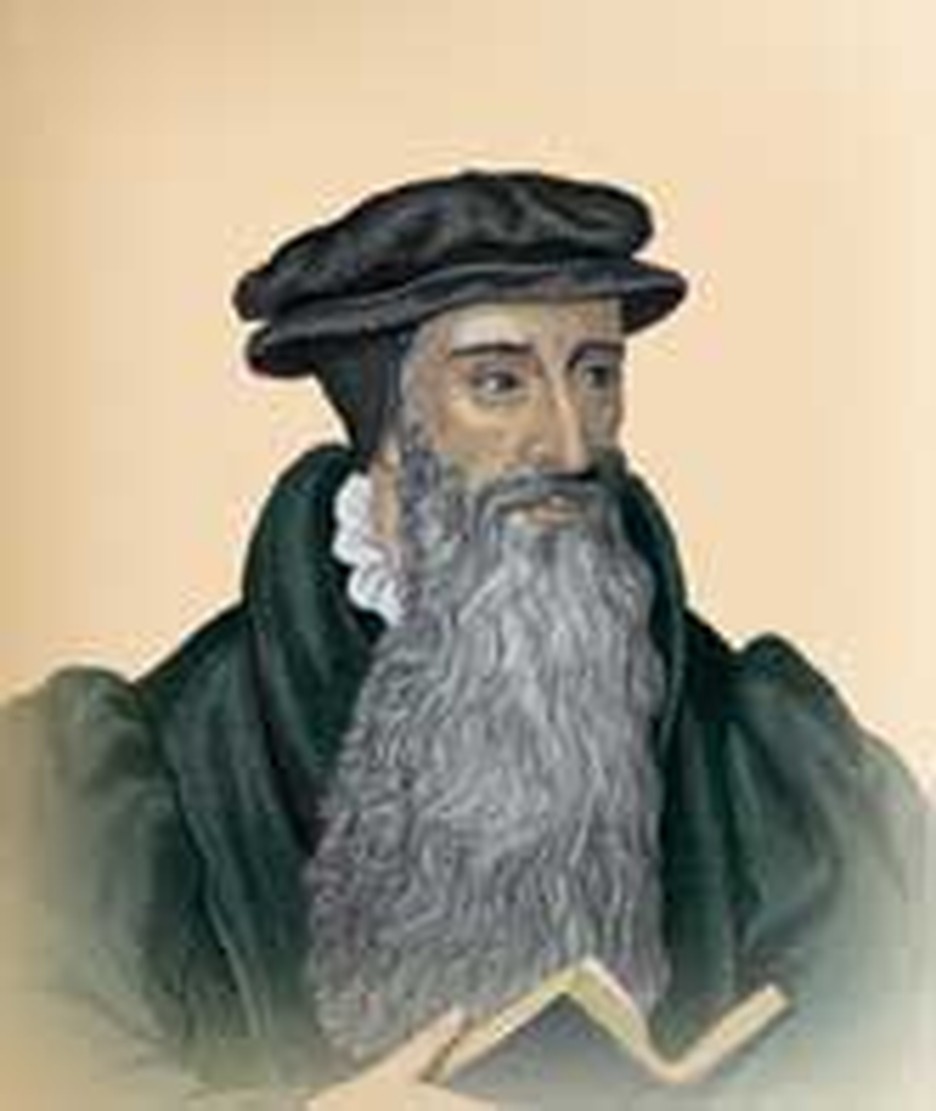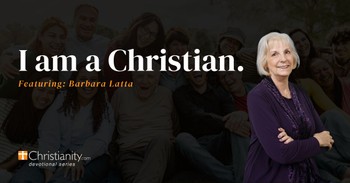
John Knox was in Ormiston, Scotland, on the fateful evening in 1546 when Cardinal Beaton arrested George Wishart. John tried to defend his friend with steel, but Wishart plucked the sword out of his hand. He would burn for preaching reform in Scotland but John need not. Wishart's death helped map John's future.
Others besides John Knox admired Wishart. Certain reform-minded Scots were so outraged by his execution that they assassinated Beaton in his castle at St. Andrews and holed up within its walls.

When a roundup of Wishart supporters began, John fled to St. Andrews for protection. His teaching so impressed the assassins that they asked him to become their pastor. John said no. The rebels argued that he was refusing the call of God. John finally gave in. "Yet how small was my learning, and how weak I was of judgment when Christ Jesus called me..." he later wrote.
John preached in the castle and in nearby towns, despite danger to himself. Like Wishart, he would boldly preach the Scriptures.
Pull that oar!
French galleys attacked St. Andrews to avenge Beaton's death. After a short resistance, the men in the castle saw that they would have to surrender and cut a deal with the French. Promised their freedom, they were instead made slaves in the galleys. John, one of these slaves, was chained to a bench and forced to pull a heavy oar.
He became so ill that no one expected him to live. Yet, one day, in sight of St. Andrews he prophesied, "...I see the steeple of that place where God first opened my mouth in public to his glory, and I am fully persuaded, however weak I appear, that I shall not depart this life till my tongue shall glorify His godly name in the same place." He recovered.
Interlude in Edward's England
When he was freed, John went to England. King Edward VI loved him and made him a royal chaplain. John preached a scalding sermon against treachery. Edward's lords knew he was rebuking the advantage they took of their young king, and they hated John for it.
Edward died and Mary Tudor became queen. John had to leave his wife and flee to Switzerland and John Calvin's Geneva for safety because Catholic Mary burned outspoken Protestants.
Later, when John returned to England to fetch his wife, he found that reform ideas were still bubbling in Scotland. He crossed over from England to preach. The Black Friars summoned him to Edinburgh to answer charges of heresy. Powerful lords supported John, and the friars backed down. He returned again to Geneva safely with his family.
Nearly captured and burned
John wrote letters home, encouraging reform. Scottish lords begged him to return. He agreed. Word of his arrival thrilled Scotland. John printed his ideas for a new kind of church of free men under Christ. Many Scots followed him. The Catholic rulers faltered.
But the mood changed. John was nearly captured and punished as a second Wishart. In the nick of time, friends rescued him. The situation soured for the reformers, and they were ready to give up until John stirred up their courage and hope.
The tide finally turned when Elizabeth took the English throne. England and Scotland signed a treaty that freed John to build the Kirk (Church). Under John, no one was burned or tortured for faith in Scotland.
Butting heads with his queen
Trouble lay ahead, though. Scotland's Queen Mary, a beautiful Catholic girl, came home from France after her husband, Francis II, died. She believed in absolute monarchy. John didn't. Her smile melted hearts and John fell into disfavor. His sermons offended her, for she attended Mass while he preached against it. "It is not [Christ's] presence in the bread that can save us but his presence in our hearts...." argued John.
Mary made him appear before her. John bluntly told her that any ruler who broke God's laws toward a people could be removed by them.
Mary summoned John again when he preached against her proposed marriage to the Catholic prince, Don Carlos of Spain. "What have you to do with my marriage?" she demanded. "Or what are you within this Commonwealth?"
"A subject born within the same!" retorted John. The lowliest Scot had the same duty to warn his nation of danger as the greatest lord.
When John urged the Scots to gather together to protect the Reformation faith, Mary put him on trial for treason. At first the lords sided with Mary, but John's bold answers convinced them to issue a unanimous verdict of "not guilty."
"Been There"
Mary's scandals drove her from the throne. John himself had to move to St. Andrews for safety after enemies tried to assassinate him. As John grew old, his political influence declined. The day before he died at age 67, he urged friends to live in Christ. He had been wrestling with God for the Kirk, he said. "I have been in heaven!" When he could no longer speak, he held up two fingers to show he still had faith, and shortly afterward he slipped into eternity.
When and Where in Knox's Life
1505 born between this year and 1513
1546 Wishart executed
1547 Knox preaches at St. Andrews; is captured
1549 freed from galley enslavement
1551 becomes chaplain to King Edward VI
c. 1553 marries secretly
1553 flees to Geneva
1555 visits England, faces the Black Friars
1556 preaches on the Continent
1558 Elizabeth ascends the English throne
1559 Knox returns to Scotland, inspires reform
1560 draws up the Scottish Confession
1561 Mary Queen of Scots comes home
1563 Knox tried for treason
1567 preaches daily against Mary
1567 Mary abdicates
1572 Knox dies
What Did Knox Accomplish?
• John's blueprint for the church must have seemed impossible when he prepared his Book of Order. But Scotland was ripe for reform. He wrote, "The thirst of the poor people, as well as the nobility here, is wondrous great, which putteth me in comfort that Christ Jesus shall triumph for a space here...." By the time of his death, the "impossible" was the ordinary. The Catholic church, which began the struggle with all power on its side, was swept away. In its place was a Protestant Kirk, the Presbyterian Church, ruled not by Roman hierarchy but by local clergy and elders.
• Under Knox's leadership, Scottish families were transformed. Countless men led worship in their own homes. The singing of psalms in daily life became widespread. Because John placed heavy emphasis on universal education, the Bible was read in every Scottish town and glen.
• Knox's idea that a ruler is responsible to the ruled influenced English and American politics. In Britain, the Parliament that overthrew King Charles I was largely Presbyterian; and in America, Presbyterians were prominent in the Revolution.
• The Presbyterian church became a force for good not just in Scotland but wherever Scots went. Famous Presbyterians include John Flynn, visionary of Australia's Outback; David Livingstone, the explorer; Mary Slessor, the missionary; and John Witherspoon, the educator. Most English-speaking nations have strong Presbyterian traditions as do South Africa and South Korea, which Presbyterians evangelized.
• In Scotland, Knox led by example. "I sought neither pre-eminence, glory, nor riches; my honor was that Christ Jesus should reign...."
• Knox preserved invaluable details in his acclaimed History of the Reformation in Scotland.


